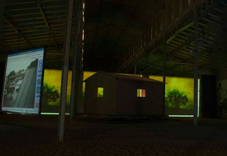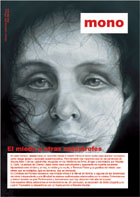On Daniel G. Andújar‘s Hack Landscape.
Published in PhotoEspaña 2006 Naturaleza:
Arcades first appeared in Paris in the first third of the nineteenth century and became increasingly commonplace, as Walter Benjamin points out, with the growth of the textile trade, which marked the beginning of a hitherto unknown relationship between the inhabitant as a customer/buyer (user) and the city. Glass, iron, overhead light and artificial lighting -«The arcades were the setting for the first gas lighting†wrote Benjamin – covered entire blocks of buildings. This new architectural concept was in keeping with the period of change and the industrial revolution it formed part of. However, it also represented the ubiquity of a city inside a larger city, a clear attempt to create a «new» world inside a known one, while evoking the ideals of progress and well-being, albeit founded on a virtual idea, unreal or unattainable, that the physical and tangible world no longer seemed capable of generating or achieving.



